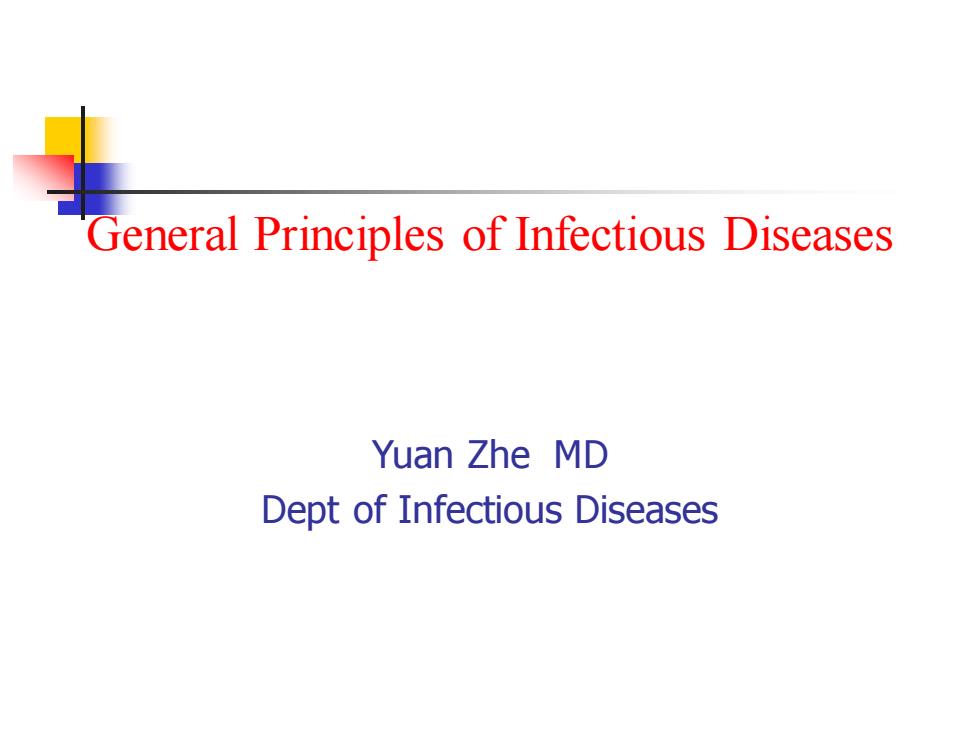
General Principles of Infectious Diseases Yuan Zhe MD Dept of Infectious Diseases
General Principles of Infectious Diseases Yuan Zhe MD Dept of Infectious Diseases
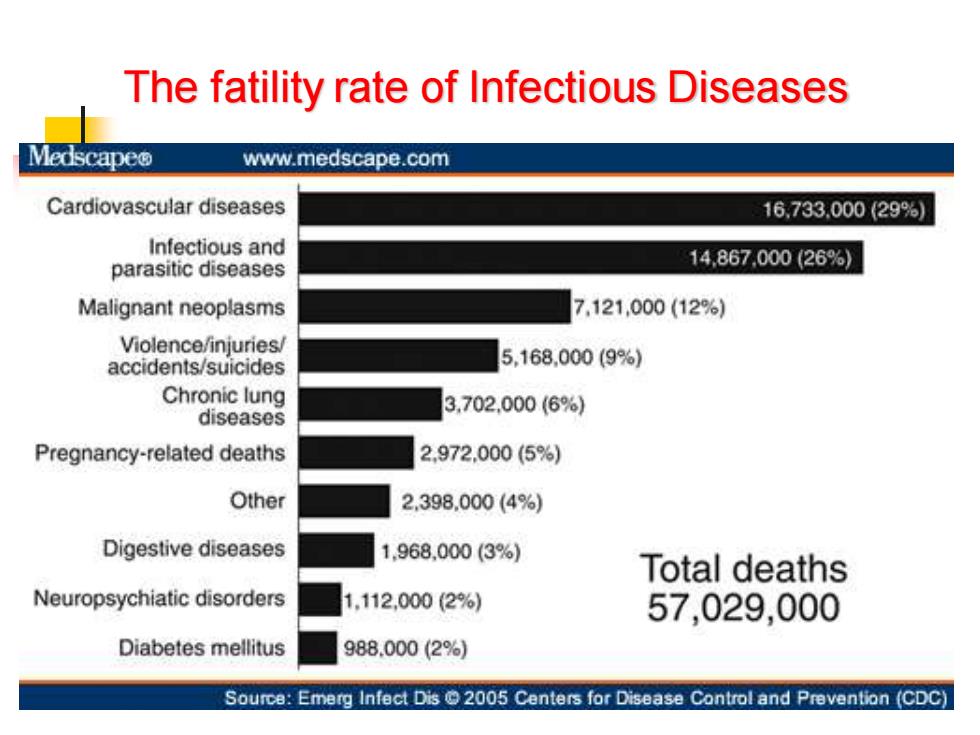
The fatility rate of Infectious Diseases Medscape www.medscape.com Cardiovascular diseases 16,733,000(29%) Infectious and parasitic diseases 14,867,000(26%) Malignant neoplasms 7.121,000(12%) Violence/injuries/ accidents/suicides 5,168,000(9%) Chronic lung 3,702,000(6%) diseases Pregnancy-related deaths 2,972.000(5%) Other 2,398.000(4%) Digestive diseases 1968,000(3%) Total deaths Neuropsychiatic disorders 1.112,000(2%) 57,029,000 Diabetes mellitus 988.000(2) Source:Emerg Infect Dis2005 Centers for Disease Control and Prevention(CDC)
The fatility rate of Infectious Diseases
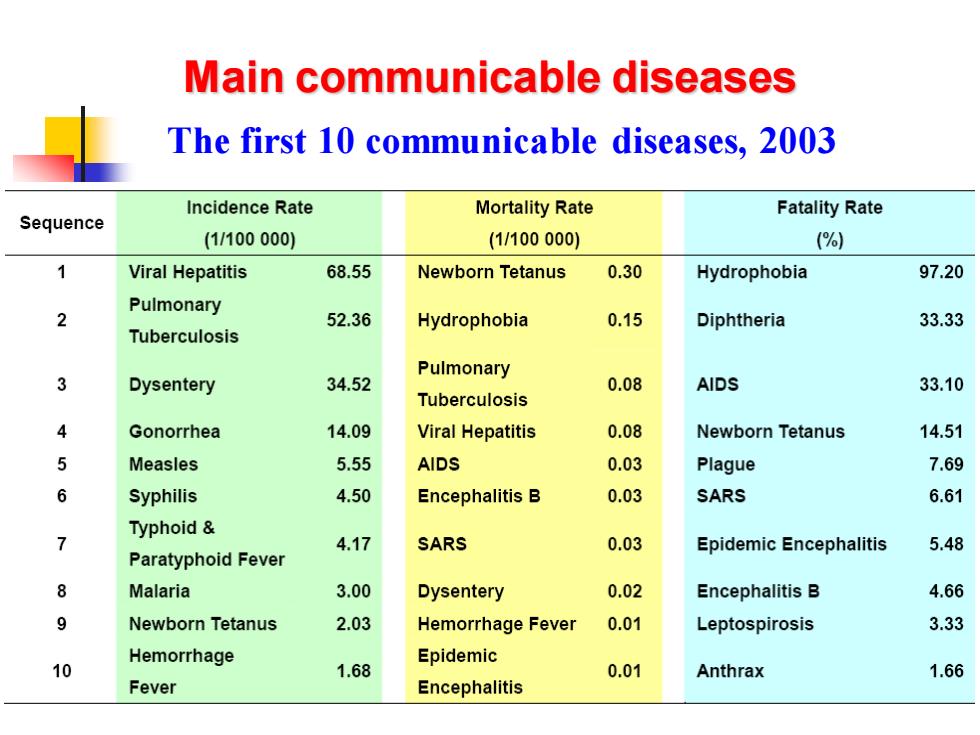
Main communicable diseases The first 10 communicable diseases,2003 Incidence Rate Mortality Rate Fatality Rate Sequence (1/100000) (1/100000) (%) Viral Hepatitis 68.55 Newborn Tetanus 0.30 Hydrophobia 97.20 Pulmonary 2 52.36 Hydrophobia 0.15 Diphtheria 33.33 Tuberculosis Pulmonary 3 Dysentery 34.52 0.08 AIDS 33.10 Tuberculosis Gonorrhea 14.09 Viral Hepatitis 0.08 Newborn Tetanus 14.51 5 Measles 5.55 AIDS 0.03 Plague 7.69 6 Syphilis 4.50 Encephalitis B 0.03 SARS 6.61 Typhoid 7 4.17 SARS 0.03 Epidemic Encephalitis 5.48 Paratyphoid Fever 8 Malaria 3.00 Dysentery 0.02 Encephalitis B 4.66 9 Newborn Tetanus 2.03 Hemorrhage Fever 0.01 Leptospirosis 3.33 Hemorrhage Epidemic 10 1.68 0.01 Anthrax 1.66 Fever Encephalitis
The first 10 communicable diseases, 2003 Main communicable diseases
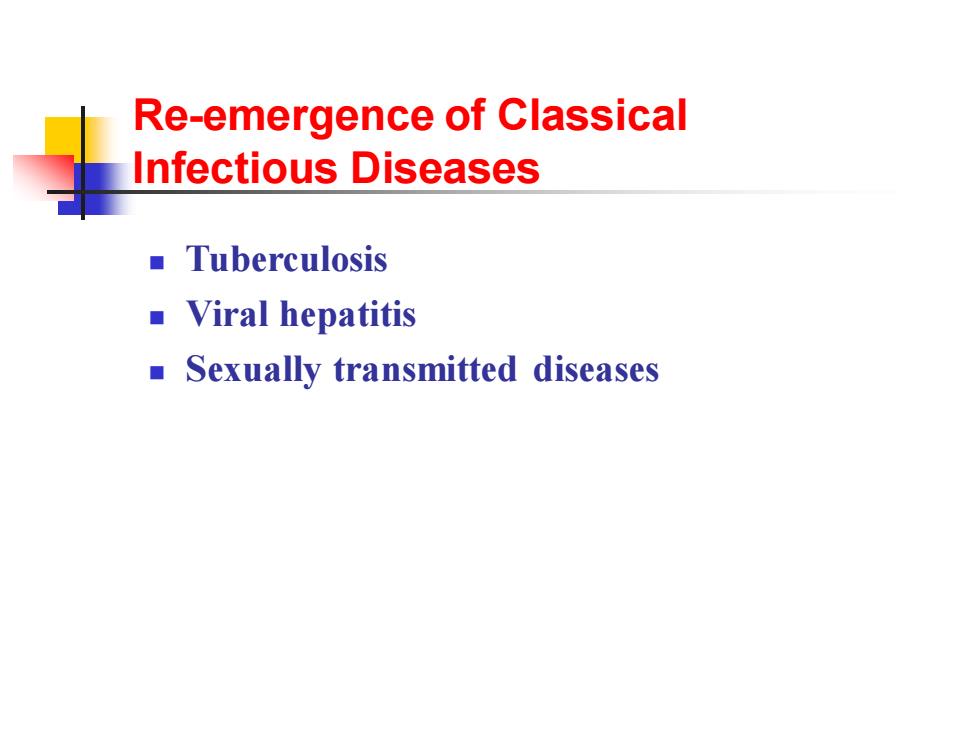
Re-emergence of Classical Infectious Diseases Tuberculosis Viral hepatitis Sexually transmitted diseases
Re-emergence of Classical Infectious Diseases ◼ Tuberculosis ◼ Viral hepatitis ◼ Sexually transmitted diseases
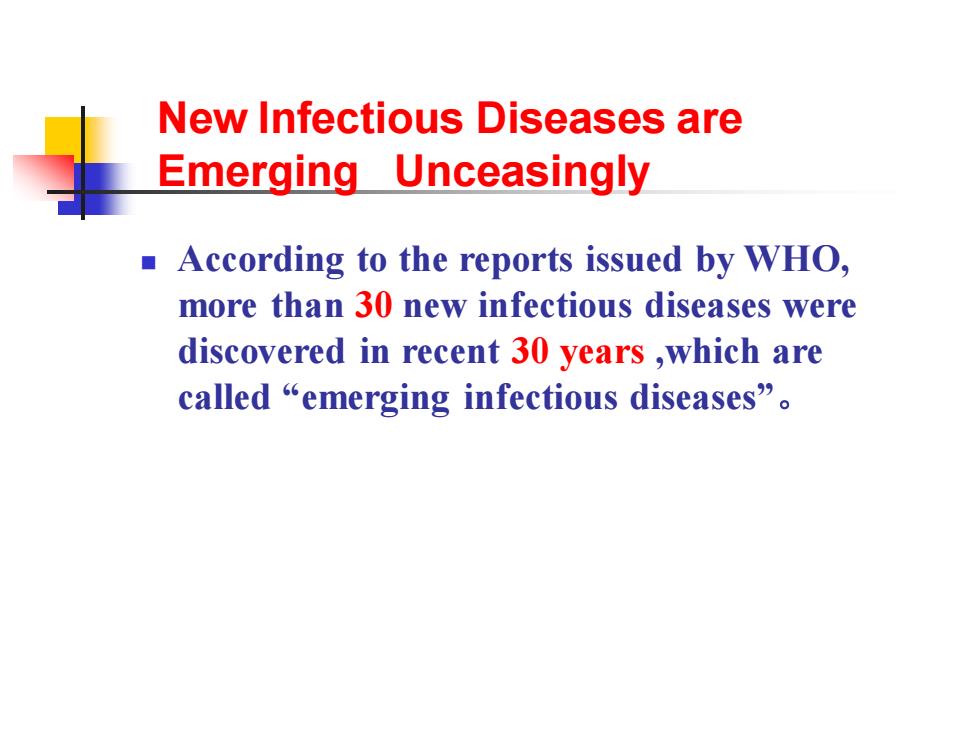
New Infectious Diseases are Emerging Unceasingly According to the reports issued by WHO, more than 30 new infectious diseases were discovered in recent 30 years which are called“emerging infectious diseases
New Infectious Diseases are Emerging Unceasingly ◼ According to the reports issued by WHO, more than 30 new infectious diseases were discovered in recent 30 years ,which are called “emerging infectious diseases

Major etiologic agents and infectious diseases identified since 1980's 1982 Escherichia Coli 0157:H7 ◆ 1982 Prion ■ 1983 HIV AIDS ◆ 1988 Hepatitis E virus ■ 1989 Hepatitis C virus ◆ 1992 Vibrio cholerae 0139 1994 Sabia virus ◆ 1995 Human herpes virus-8 ■ 1997 H5N1 virus (Avian influenza virus) 2003 SARS Virus(severe acute respiratory syndrome,SARS) 2005 Streptococcus suis
Major etiologic agents and infectious diseases identified since 1980’s ▪ 1982 Escherichia Coli O157:H7 ▪ 1982 Prion ▪ 1983 HIV AIDS ▪ 1988 Hepatitis E virus ▪ 1989 Hepatitis C virus ▪ 1992 Vibrio cholerae O139 ▪ 1994 Sabia virus ▪ 1995 Human herpes virus-8 ▪ 1997 H5N1 virus (Avian influenza virus) ▪ 2003 SARS Virus (severe acute respiratory syndrome, SARS) ▪ 2005 Streptococcus suis
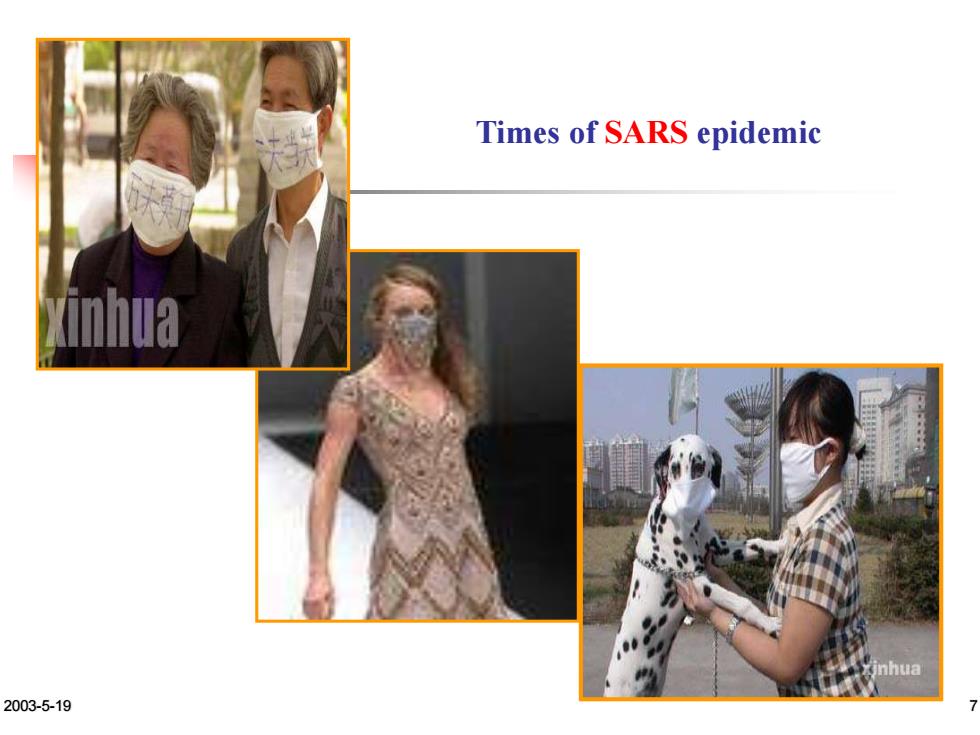
Times of SARS epidemic nhua 2003-5-19 7
2003-5-19 7 Times of SARS epidemic
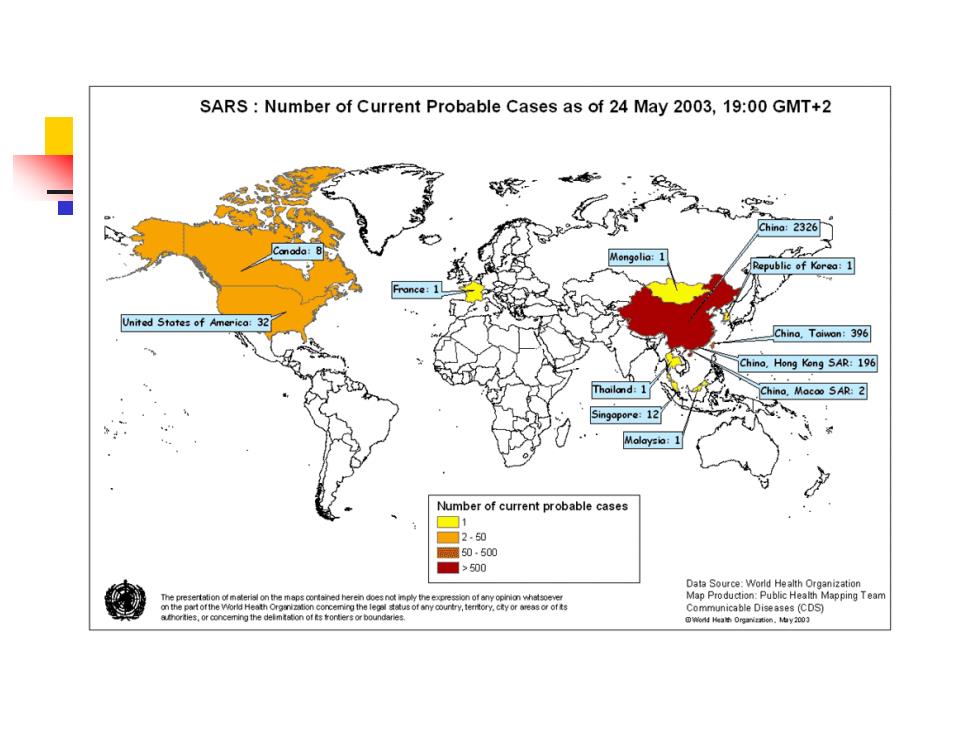
SARS:Number of Current Probable Cases as of 24 May 2003,19:00 GMT+2 hina:2326 Chino.Toiwon:396 Chino.Hong Kong SAR:196 Thailand:1 Chino,Macoo SAR:2 Singopore:12 Number of current probable cases 1 藏50.500 >500 Data Source:World Health Organization Map Production:Public Heakh Mapping Tear D)
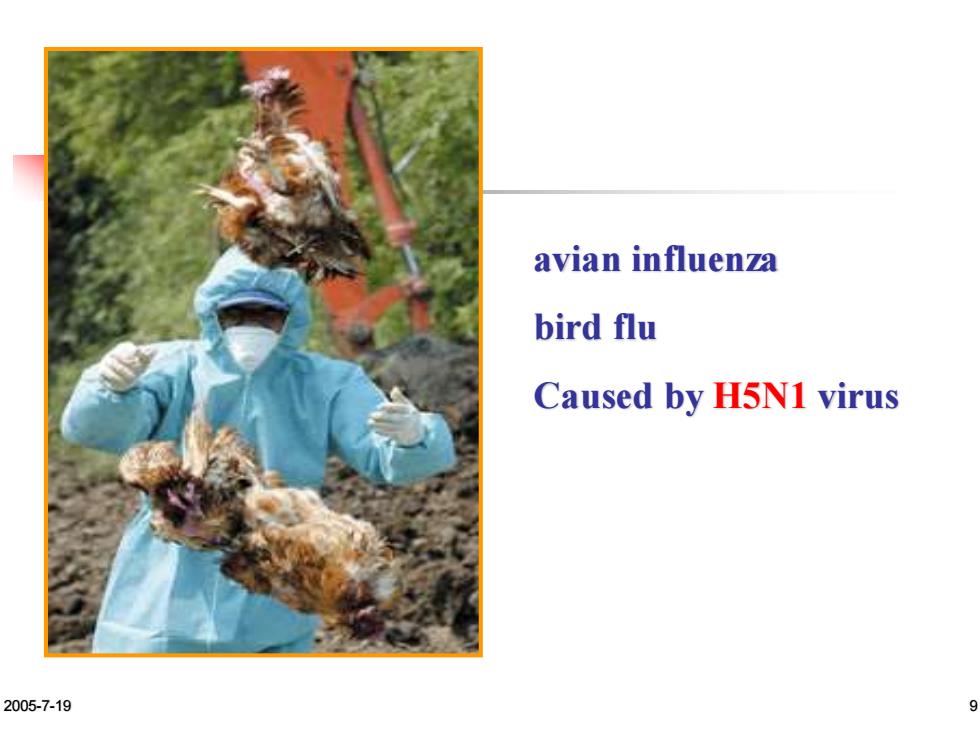
avian influenza bird flu Caused by H5N1 virus 2005-7-19 9
2005-7-19 9 avian influenza bird flu Caused by H5N1 virus

Outline Infection and Immunity 2. Pathogenesis of Infectious Diseases 3. Epidemic Process and The effect Factors 4.Features of Infectious Disease 5.Diagnosis of Infectious Diseases 1.Treatment of Infectious Diseases 2. Control of Infectious Diseases
Outline 1. Infection and Immunity 2. Pathogenesis of Infectious Diseases 3. Epidemic Process and The effect Factors 4. Features of Infectious Disease 5. Diagnosis of Infectious Diseases 1. Treatment of Infectious Diseases 2. Control of Infectious Diseases